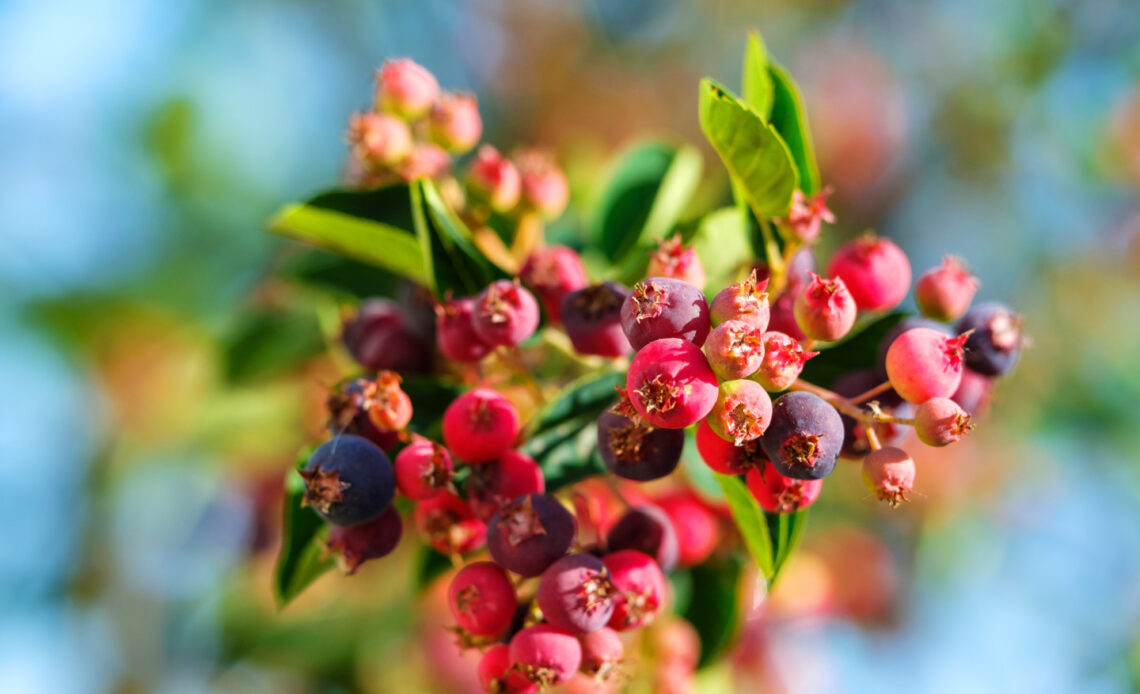
The small, dark purple fruits of the irga can easily be confused with blueberries or bilberries, but the taste of the irga is sweeter. Its flesh is denser and resembles an apple or pear. There are more than 30 varieties of irga, most of which grow in northern regions. Its fruits are a good source of iron, calcium, magnesium, potassium and antioxidants. It is equally healthy and tasty both fresh and dried or baked.
- What is irga?
- Caloric content
- Useful properties of irgi
- Contraindications
- What can be made from chokeberry
- How to store
What is irga?
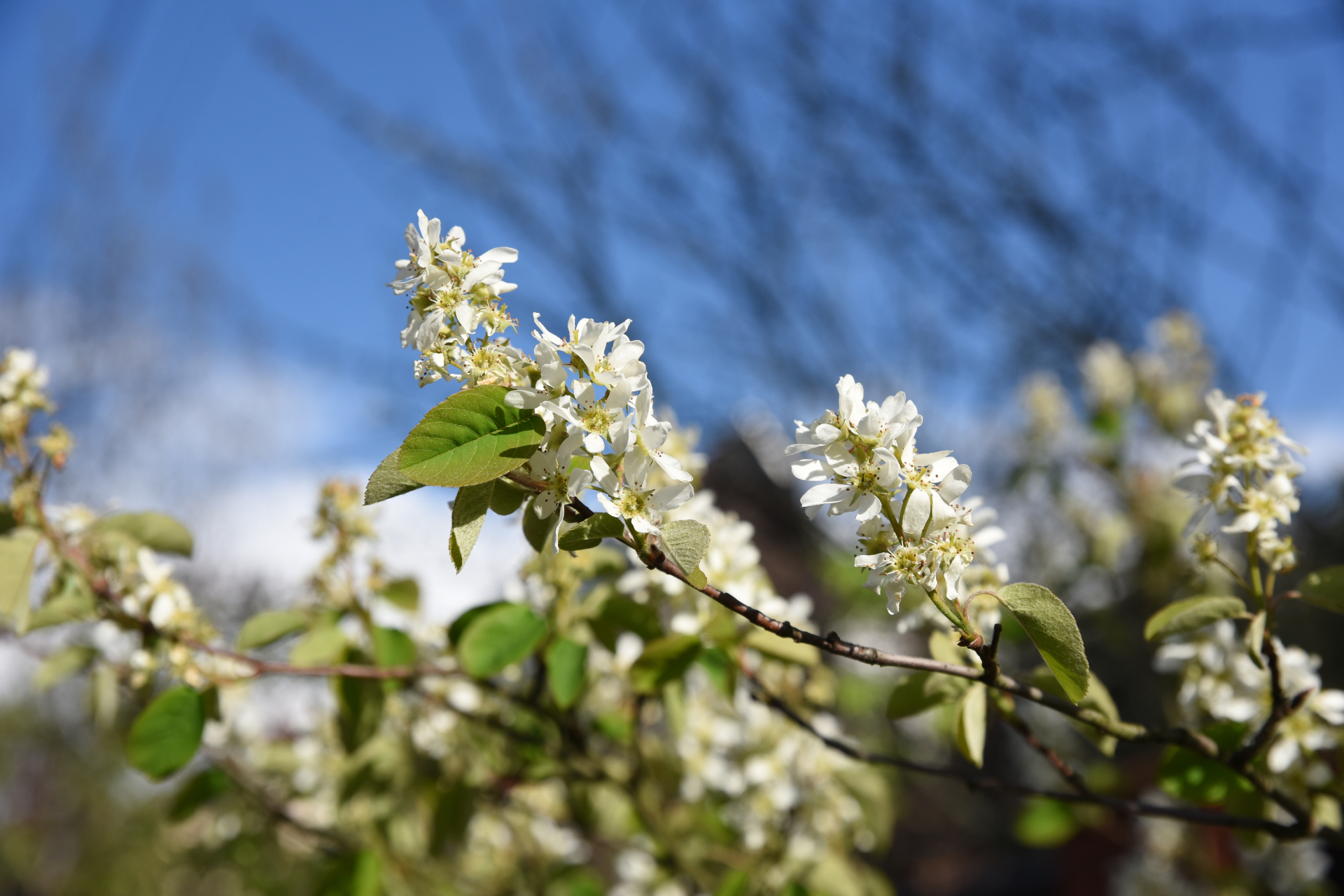
The irga grows well in northern regions and is actively cultivated, for example, in Canada.
The irga is a medium-sized shrub belonging to the Rosaceae family. This unpretentious plant can withstand severe frosts and grows in a variety of soils.
Historically, chokeberry was used not only in cooking, but also for medicinal purposes. For example, the indigenous people of North America brewed its branches and leaves, and the resulting infusion was used for disinfection (1). It was also part of the traditional Indian camp dish – pemmican (buffalo meat mixed with berries and fat).
The fruits of the chokeberry are eaten fresh, dried and preserved. It is added to pies and other confectionery, jams and syrups are made from chokeberry, it is suitable for making wine and cider.
What does irga look like?
The fruits of the chokeberry are dark, from reddish-purple to almost black, and are often called berries. But from a botanical point of view, its closest relatives are apples. Ripe chokeberries taste sweet, with a nutty-almond flavor.
The fruits of the irgi are dark in color, from reddish-purple to almost black.
Caloric content of irgi and nutritional value
100 grams of chokeberry contains (2):
- Kcal 85;
- Proteins 1.33 g;
- Carbohydrates 18.49 g;
- Fiber 5.9 g;
Minerals:
- Calcium 42 mg;
- 24 mg of magnesium;
- Iron 1 mg;
- Potassium 162 mg;
Vitamins:
- Vitamin C 3.6 mg;
- Vitamin A 11 me;
- Vitamin E 1.1 mg.
Useful properties of irgi
Amelanchier is an excellent source of iron, calcium, and potassium. It has high levels of flavonoids and anthocyanins, which have an anti-inflammatory effect and protect blood vessels (3).
A handful (100 g) of chokeberry provides almost 60% of the daily requirement of beta-carotene, says Maria Volchenkova, nutritionist at BestDoctor and member of the European Union of Dietitians and Nutritionists. In the human body, it is necessary for good vision and a healthy immune system, among other things.
“Due to the high content of soluble and insoluble fiber, chokeberry stimulates intestinal peristalsis and has a positive effect on the microbiome,” the expert explains. Here are some more useful properties of the substances contained in chokeberry:
1. Contains vitamins for vision, hair and skin
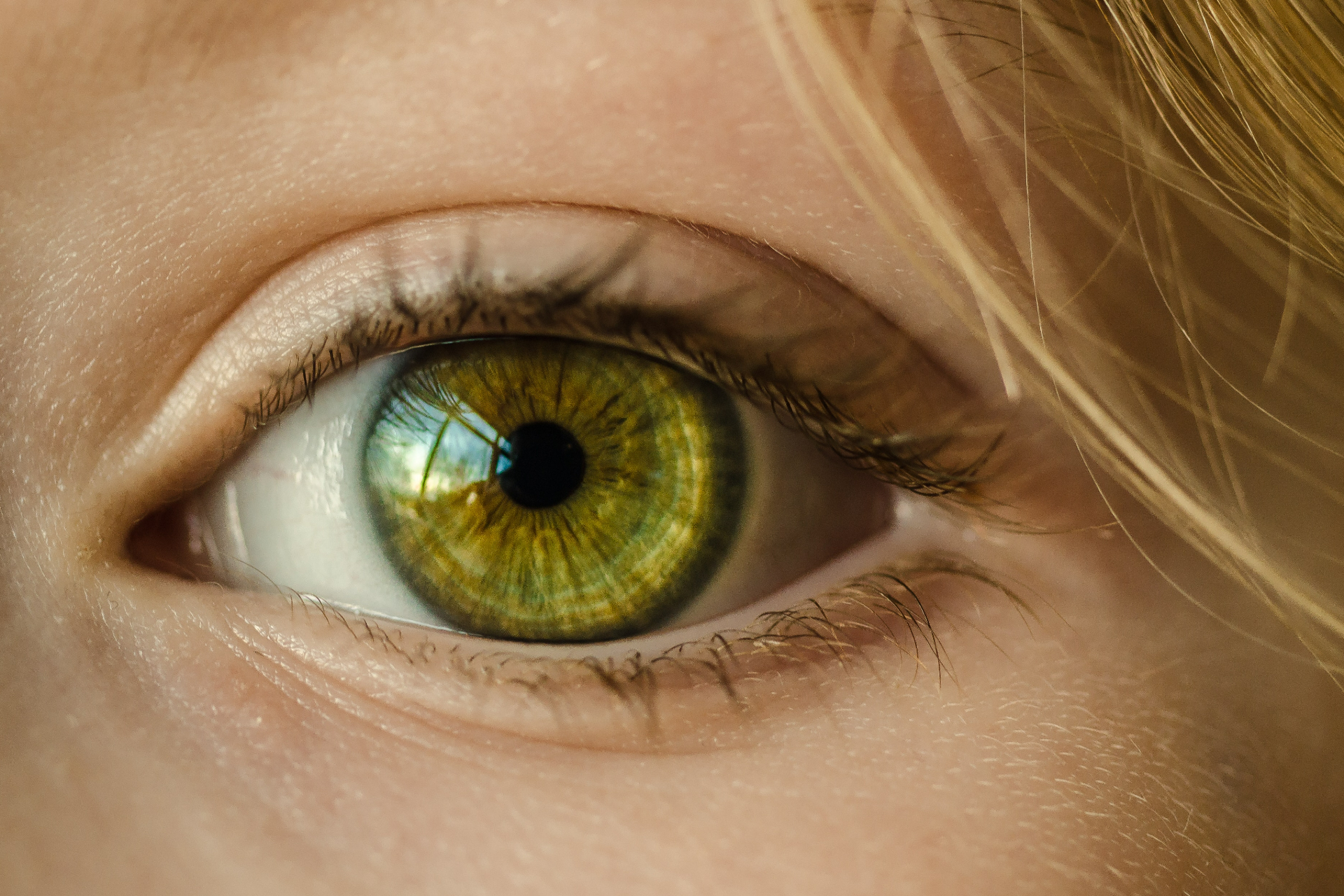
Like many fruits and vegetables, chokeberry is rich in vitamins. Vitamin C in its composition is crucial for maintaining collagen, a protein found in the skin, bones, and many other parts of the body. It is also responsible for the functioning of the entire immune system.
Vitamin A is important for vision because it helps produce a special eye pigment called rhodopsin. It allows our eyes to distinguish colors and adapt to darkness. Taking vitamin A has also been shown to reduce the risk of macular degeneration and age-related vision loss (4).
Irga also contains several B vitamins (5). Riboflavin or vitamin B2 is necessary for the metabolism of fats, carbohydrates and proteins. Folic acid or vitamin B9 helps the growth of new cells, reduces the risk of cardiovascular diseases and reduces the side effects of some medications.
Another important vitamin in the composition of irgi is B7, also known as biotin. This is one of the most popular supplements for hair and nail care.
2. Rich in minerals for bones and cardiovascular function
The chokeberry contains calcium, iron and potassium. The first is not produced by the body and can only be obtained from food or supplements. The greatest amount of calcium is contained in teeth and bone tissue. As soon as a deficiency occurs, the body compensates for these losses at their expense. As a result, a person may develop osteoporosis and other diseases. The recommended daily dose of calcium for adults aged 18–59 is 1000 mg.
Iron plays an important role in many body functions because it is involved in the process of delivering oxygen to tissues. When there is a shortage of it, anemia occurs. Symptoms of this disease usually include fatigue, dizziness, and general muscle weakness. Adult women need 18 mg of iron per day, men – half as much.
Potassium is important for regulating blood pressure, reducing the risk of stroke and heart disease. It also helps maintain bone density (6). This is especially important as you age.
3. Contains antioxidants to protect against oxidative stress
The composition of irgi includes several types of these useful substances. One of the most obvious is anthocyanins. These are blue, purple or red water-soluble natural pigments that are present in the leaves, berries and fruits of various plants. It has been proven that antioxidants have potential preventive and therapeutic effects in many diseases, including cancer, cardiovascular, muscular and others.
There is evidence that polyphenolic compounds contained in chokeberry extracts can effectively protect cell membranes, increase the resistance of low-density lipoproteins (LDL) to oxidation, and inhibit DNA damage (7).
Harm of irgi
As with any other product, some people may have an individual intolerance to the substances contained in the game. Therefore, when trying irga for the first time, it is better to start with a small portion, especially if there is a tendency to allergies.

What can be made from chokeberry
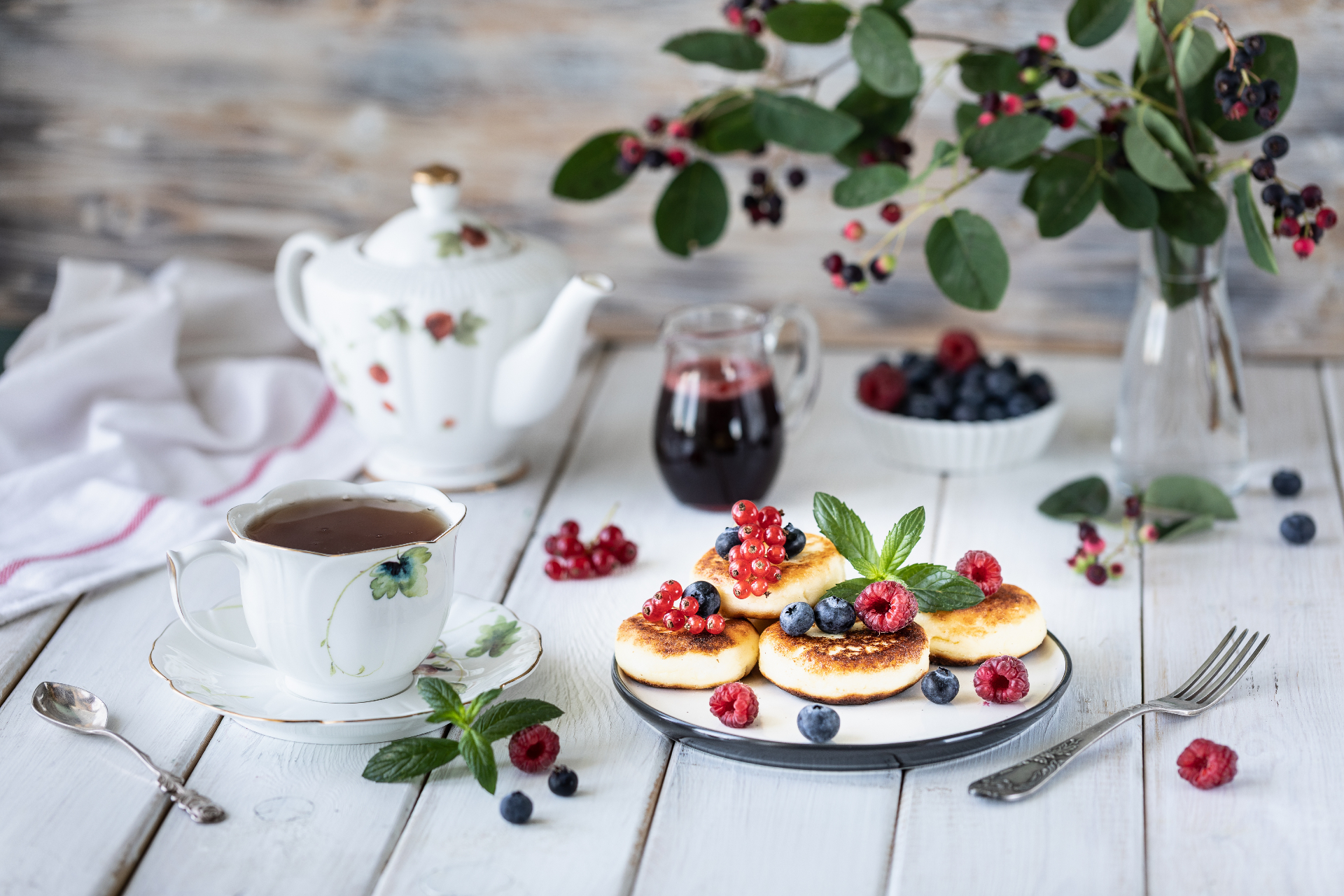
Irga is suitable for adding to cakes and pastries, making jams, preserves and drinks
The best way to eat chokeberries is fresh. But they are also great for adding to cakes and pastries, making jams, preserves and drinks. Here is one simple recipe for a dessert with chokeberries. You will need silicone muffin molds, homemade dough or a ready-made mix, for example, for muffins. How to cook:
- In a saucepan, mix the berries with sugar and water, cook for 10 minutes over low heat until the mixture thickens. Then set aside to cool.
- Preheat oven to 300 degrees. Using a rolling pin, roll out the dough and cut out circles (or pour the diluted mixture into molds).
- Divide the dough into the molds and add a spoonful of cooked berries to each.
- Bake for 18-20 minutes. Let the finished dessert cool.
How to store irga
The fruits of the irga retain their useful properties and taste for a long time, so they can be stored for the winter. One of the quickest ways is freezing. The irga is pre-washed and dried at room temperature for three days. Then the fruits are scattered in one layer on a baking sheet or cardboard tray and placed in the freezer. After freezing, the irga is packaged in bags.
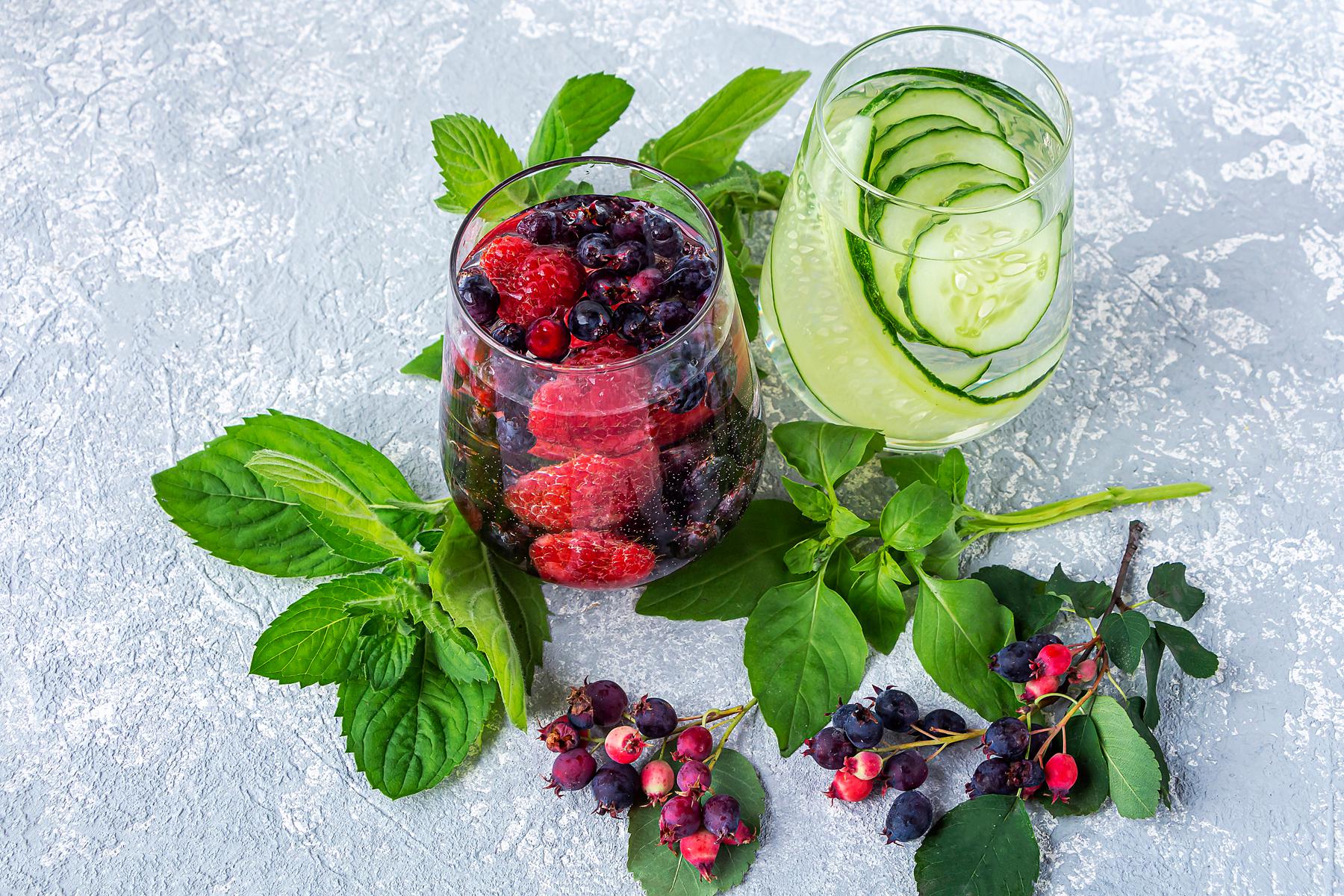
Before freezing, the irga must be washed and dried at room temperature for three days.
